Fitness trackers have steadily grown in popularity since the technology became available to the general public. These trackers have become a major part of people’s fitness regimes because they have the ability to track an individual’s daily activity, allowing those who want to keep fit to set themselves daily activity targets that can be easily recorded on these devices.
Trackers use sensors to collect data such as how many steps are taken and how many calories are burnt by the body throughout the day from exercise or normal daily activities like walking and climbing stairs.
Some fitness trackers even monitor an individual’s heart rate, and all information is displayed on a user-friendly interface.
One of the most popular forms of fitness trackers is the watch which most people already wear. All the fitness features are amalgamated within it the time-telling device, meaning that no extra accessories need to be worn.
However, there are alternatives to watch fitness trackers. Here is a look at five of the best non-watch fitness trackers that can help individuals achieve their fitness goals.
Types of Fitness Trackers
Rings
Fitness rings are similar to watch fitness trackers but a lot smaller and easier to conceal. They, too, can track daily activity, calorie burning, and heart rates. Some fitness rings go further still and monitor breathing rates, blood oxygen levels, and body temperature.
Watches
Smartwatches have fitness tracking sensors built within them. They are a popular choice for those who want their daily activity statistics displayed in simple-to-understand data. Fitness watches allow users to count the number of steps they have completed in a day, whether it is in the form of running, walking, step climbing, or even completing a workout in a gym.
Ankle
Ankle fitness trackers are a little harder to hide unless long trousers are worn. These devices need to be firmly strapped to the ankle, so they remain in place during any kind of activity. Ankle fitness trackers can read the number of steps taken more accurately than other trackers, but there is some debate about how accurate they are when it comes to calorie burning, heart rate, and blood oxygen level readings.
Clip-On Fitness Trackers
Clip-on fitness trackers offer versatility when it comes to attaching them to the body, but it is important that wherever they are placed, they should have some contact with the skin for accurate readings. Clip-on fitness trackers can be clipped to trouser belts and clothing, and here they can supply useful fitness data throughout the day.
5 Best Non-Watch Fitness Trackers
1. Bellabeat Leaf Urban Smart Jewelry Health Tracker
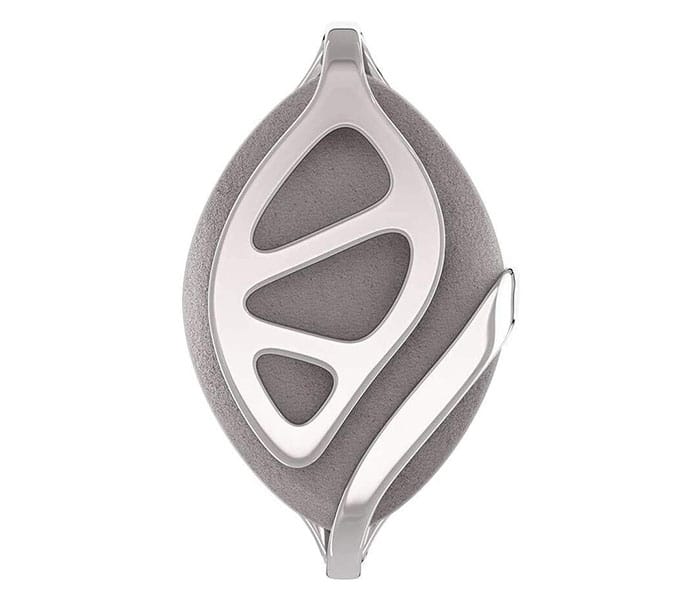
The Bellabeat Leaf Urban Smart Jewelry Health Tracker is a more female-focused health product both in design and in the data it provides. The Bellabeat Smart Health Tracker monitors sleeping patterns and activity levels and comes with reproductive health monitoring options as well.
Although it monitors activity rates, such as the number of steps completed in a 24-hour period, the accompanying app allows users to add customized add-ons, such as calorie burning, to the data that is recorded.
This piece of smart jewelry also has a period tracker that can predict the start of an individual’s menstrual cycle and counts the number of days that the wearer is at their most fertile.
Sleep quality is also recorded, and periods of stress can be predicted and prevented. It also uses algorithms to predict an individual’s resistance to stress.
Because of its design, it can be worn as a necklace, bracelet, or clip, and it comes with a battery that lasts for up to six months.
2. Fitbit Zip Wireless Activity Tracker
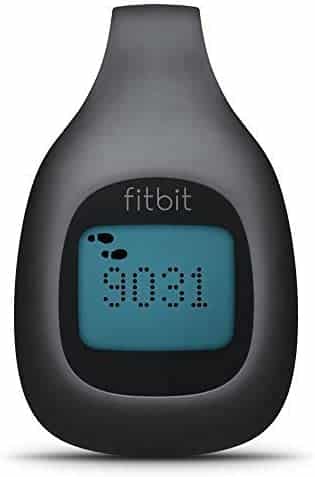
The Fitbit Zip Wireless Activity Tracker is a unisex device that allows users to track steps taken, distance covered, and calories burned daily. It can help individuals hit targets and create health programs and goals.
The device can be easily synchronized to a laptop or desktop computer and tablets, allowing users to view their daily stats and manage their health achievements. This data can also be wirelessly synched to over 150 leading smartphones.
The Fitbit Zip Activity Tracker also comes with a long-life battery which should be changed every six months. The device can be clipped to clothing and is also water resistant.
3. Fitbit One Wireless Activity Plus Sleep Tracker
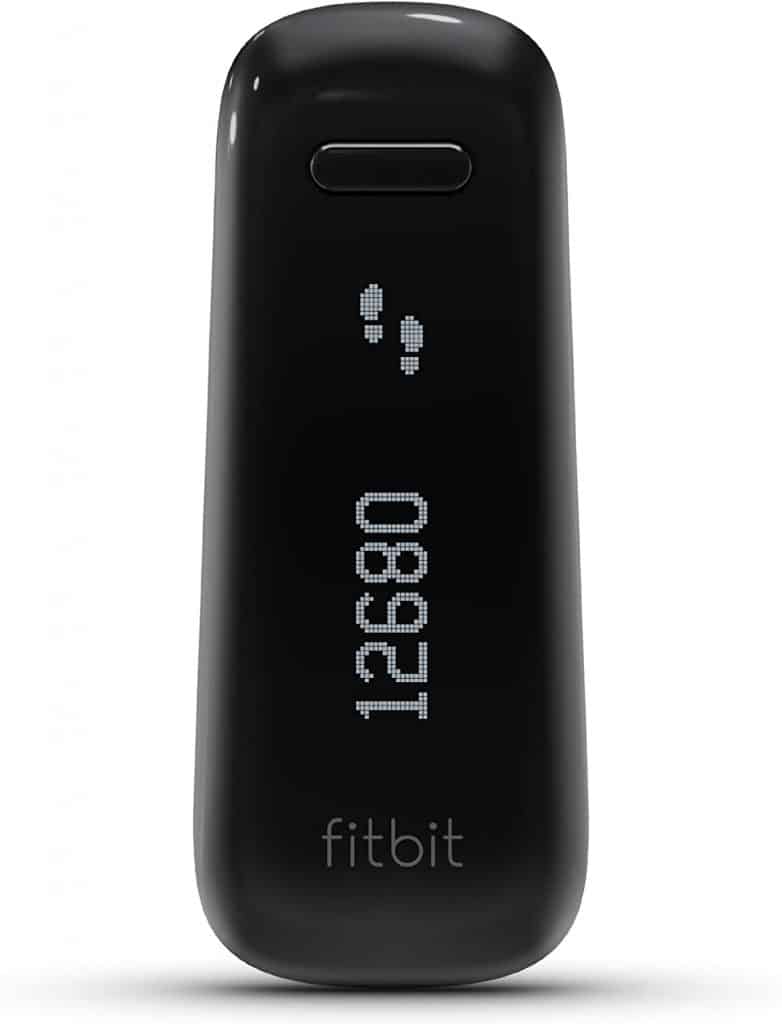
The Fitbit One Wireless Activity Plus Sleep Tracker not only monitors a user’s sleep length and the quality of sleep obtained each night, but it also comes with useful activity recording sensors too. These help to provide useful stats such as the number of steps completed in a day, floors climbed, distance covered, calories burned, and the number of minutes of activity completed during a 24-hour period.
Technically, the Fitbit One can synch automatically and wirelessly to computers, laptops, tablets, Android, iOS, and Windows-operated smartphones via Bluetooth technology. To synchronize the device with computers, a stable internet connection is required, along with a USB port.
The tracker is rain and sweat resistant but not swim proof. It has a battery that charges in a couple of hours, and for optimal performance, it is recommended that the battery is charged every seven to ten days.
Fitbit should not be used by those who have been fitted with a pacemaker or any other internal medical device.
4. Garmin HRM-Pro
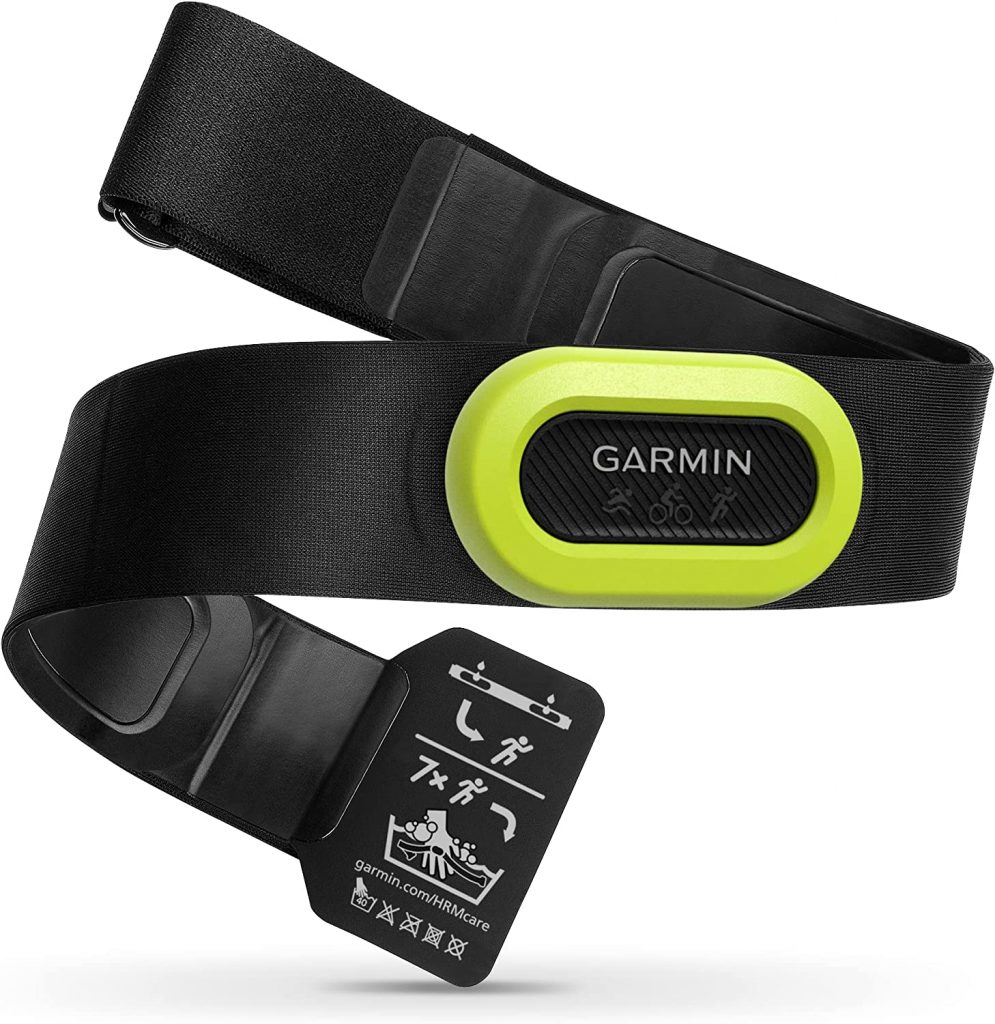
The Garmin HRM-Pro can be strapped around the rib cage. This device contains a transmitter that allows the heart rate of the user to be monitored during various forms of activity. It also transmits real-time heart rate data over Bluetooth and Ant + technology.
This device tracks running dynamics, which means that it can offer valuable insight into running styles by monitoring vertical oscillation, stride length, and ground contact time. It also measures steps and the number of calories burned in a day.
The device itself is lightweight and comfortable to wear, and the coin cell battery can last up to a year.
5. Fitbit Inspire 2 With Add On Clip
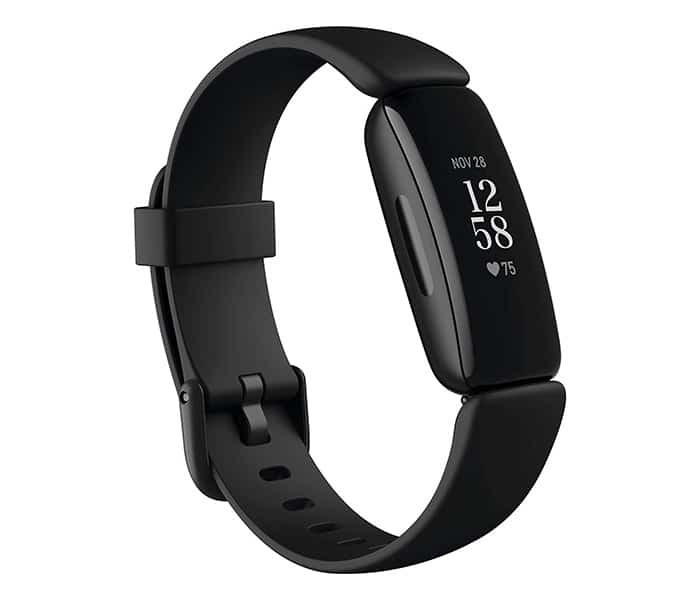
The Fitbit Inspire 2 allows individuals to track their activity levels and monitor their sleeping patterns with ease. The 24-hour heart rate mode allows for more accurate calorie-burning statistics to be calculated.
The Active Zone Minutes feature allows users to see how hard their hearts are working and for how long. This can be especially useful if individuals want to work themselves harder for longer to build stamina and improve cardiovascular health. This feature can make it easier to set and achieve activity goals.
Since quality rest is as important as physical activity, the Fitbit Inspire 2 also monitors sleep quality. It measures deep and REM sleep stages and gives users an overall sleep quality score.
4 Features To Lookout For In A Fitness Tracker
Water Resistance and Water Proof
Water resistance and waterproof features in fitness trackers may not sound that important when shopping for these devices, but both should be considered vital considering the environments that these trackers will encounter.
Most will be worn outdoors in all types of weather and during intense activity periods. So sweat and rainproof trackers are a must. Thankfully, these two features are common additions to fitness trackers, but not all are truly water resistant. This means that they cannot be worn while swimming, so if swimming is the number one exercise of choice, trackers that are water and dive resistant should be considered instead of standard sweat, rain, and splashproof models.
Battery Life
Battery life needs to be considered, too, and the choices include long-lasting batteries that perform well for up to six months to a year. Some use lithium batteries that can easily meet these predicted time periods of performance, but on average, your regular fitness tracker user will have to replace the batteries every six months.
Rechargeable battery options are also available, but with constant use and recharging, these have a limited shelf life, too, and would eventually need to be replaced over time. Generally speaking, the longer the batteries last, the better and cheaper the device will be to run in the long term.
Smart Notifications
Fitness trackers allow users to measure their daily activity rates, and these features, whether they inform of the number of steps taken in a day or the number of calories burned in a certain time period, all make keeping fit that much easier to manage.
Some go further still and monitor sleep patterns, heart rate, and oxygen levels. All these features can also help to warn people if something is wrong. Others go further still and send notifications if certain targets have been missed or activity levels have dropped, which means that they are important motivational tools as well as health monitoring devices.
Some smart fitness notifications can be customized. Even though many come as standard, it is best to buy a device that offers as many notifications as possible so that different aspects of health can be monitored, such as heart rate, activity levels, and even sleep patterns.
Thankfully, most fitness trackers are compatible with other devices, such as laptops, smartphones, and tablets. This means that notifications can be wirelessly transferred or even synchronized to all these devices.
Price
When buying anything, personal budgets have to be considered. For the serious keep fit enthusiast, a top-of-the-range health tracker can prove costly but will come with a wealth of health and fitness tracking information and statistics that will help serious fitness addicts hit their fitness targets. However, for these individuals, a fitness tracker is more of an investment than a luxury purchase.
For the more casual individual who wants some basic personal health information, then an adequate fitness tracker can be purchased for under $100 while those that supply more detailed information can cost well over $100.
The higher-priced devices should come loaded with features. Otherwise, they are not worth the price, so look out for sleep patterns, oxygen levels, and heart rate monitoring features that should come with the standard activity and calorie-burning readings.
Conclusion
Fitness trackers are a welcome addition to the fitness world because they offer individuals an insight into their daily activity habits that were not available to the general public before. Another major positive is that these trackers can also help motivate individuals to stick to fitness programs.
The most popular format for fitness trackers is in watch form, but they do come in other discreet packages that are often cheaper, and these include rings and bracelets. The beauty of these fitness trackers is that they can be used by everyone, including those who take fitness seriously!
